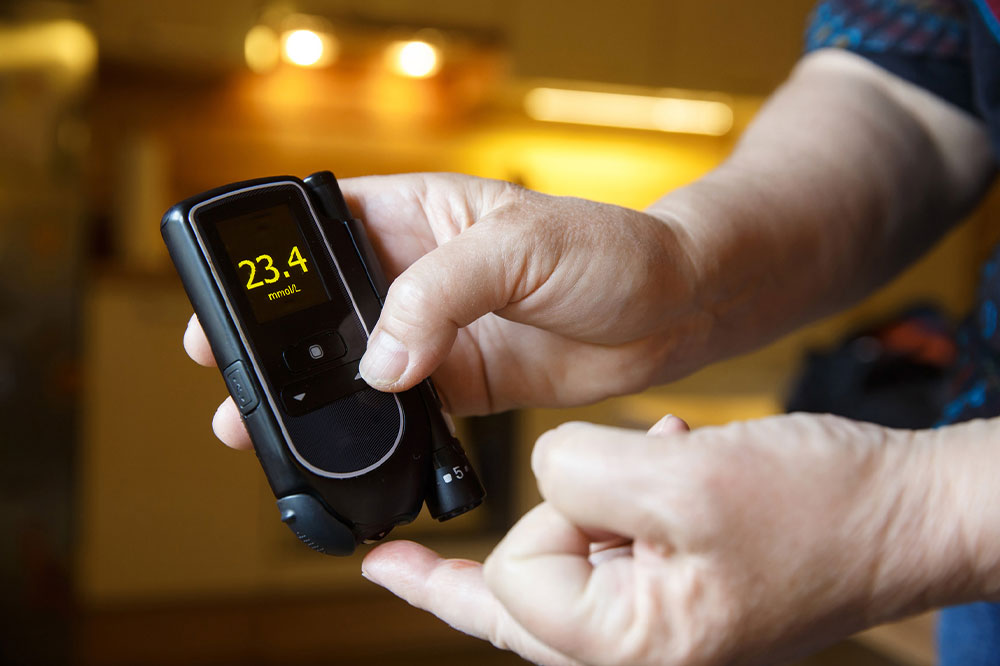
Things to know when dealing with diabetes
An abrupt rise in blood sugar levels typically characterizes diabetes. Glucose is the primary source of energy in the body, and the levels of this sugar in the blood are usually regulated by insulin. When the regulation doesn’t take place, these levels in the blood increase drastically, leading to overall health problems. About 37 million people in the country have some form of diabetes. Here are some factors to consider when dealing with this condition.
1. What is diabetes?
Diabetes, or diabetes mellitus, is a metabolic disorder where the blood sugar levels abnormally increase. Usually, the hormone insulin, which is secreted by the pancreas, helps transport glucose from the blood to the cells in your body as a source of energy. When the insulin secretion is nil or insufficient, enough glucose does not reach the cells and remains in the blood, causing a spike in blood sugar levels. Such people will have to maintain comprehensive blood sugar level charts (A1C levels), ensuring the sugar levels don’t drastically increase or decrease throughout the day.
2. Types of diabetes mellitus
There are several common types of diabetes mellitus identified, such as
Type I diabetes mellitus
This occurs in people whose bodies don’t produce insulin. This could be because of an autoimmune condition where the immune system attacks the pancreas cells and damages the organ.
Type II diabetes mellitus
This is the most common condition seen in in adults worldwide. In this condition, the body becomes resistant to insulin or the pancreas produces less insulin than needed, leading to high blood sugar.
Gestational diabetes
Gestational diabetes occurs in women during pregnancy and usually resolves itself after delivery.
Pre-diabetes
In blood sugar level charts (A1C levels), slightly elevated readings are considered indicators of prediabetes. The implication here is that levels aren’t that high to diagnose diabetes, but ignoring them will lead to the diagnosis in the future.
3. Who are likely to develop diabetes?
People who are highly likely to develop diabetes are
- Those who are 45 years or older
- People with a family history of diabetes
- Those with other related health conditions such as high blood pressure
- People who live unhealthy lifestyles
Some of the most common symptoms to look out for are
- Increased thirst and urination
- Frequent bouts of infections
- Abnormal weight loss
- Increased hunger
- Sores and wounds that take time to heal
- Tiredness
4. Why should diabetes mellitus be controlled?
When blood with high sugar levels circulates in the body, it has the ability to affect the organs. It can lead to organ damage, nerve damage, and related problems. Here are some of the complications caused by uncontrolled diabetes:
- Cardiac problems
- Vision loss and retinopathy
- Hearing loss
- Neuropathy and nephropathy
- Mental health conditions such as mood swings
The higher a person’s blood sugar levels and the longer the condition remains untreated, the more harmful it is to the body.
5. Treatment and management
When it comes to treating diabetes mellitus, the treatment is based on the last three months of blood sugar level charts (A1C levels) and the type of diabetes. The doctor will determine the right course of action. Diabetes mellitus can be managed effectively with the right lifestyle changes. Here are some lifestyle management aspects that can help:
Nutrition
Healthy changes in meal plans play a huge role in dealing with diabetes. Sugary and starchy foods can rapidly increase blood sugar levels. Similarly, simple carbohydrates raise blood sugar levels more quickly than complex carbohydrates. Changing your meal plan to include more proteins, healthy fats, and moderate to low amounts of carbohydrates will help manage the condition. Make sure your plate is a mix of fresh fruits, vegetables, healthy fat, lean meat, and whole grains for every meal.
Physical activity
Make sure you get at least 150 minutes of physical activity a week. The more active you are, the faster the body burns its fuel and the more glucose it absorbs from the blood. Physical activity helps people with all types of diabetes.
Diabetes mellitus is a metabolic condition that is becoming very common in children and adults alike. Unhealthy lifestyles have accelerated the rate at which people develop diabetes. If you have the condition, start by monitoring your blood sugar level charts (A1C levels) and get help from medical experts.




